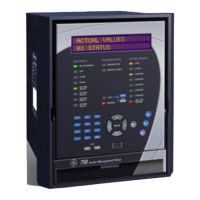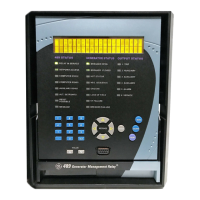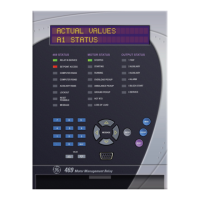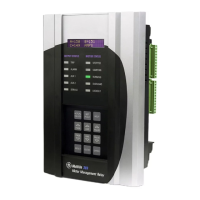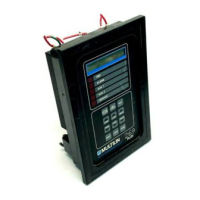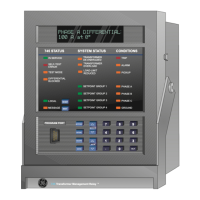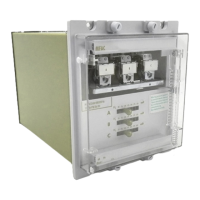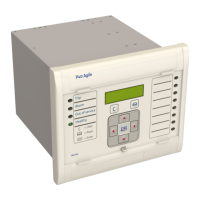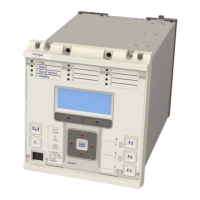Protection Schemes745
Transformer Management Relay
Commissioning
http://www.GEindustrial.com/multilin
7–34
GE Multilin
4. Slowly increase the voltage and check that the element operates when the
voltage reaches 2% above the set level. Return the voltage to nominal value.
5. Slowly decrease the current until the element resets. Check that this dropout
current level is equal to the
S4 ELEMENTS !" FREQUENCY !" OVERFREQUENCY !"
MINIMUM OPERATING CURRENT setting. If current sensing has not been enabled for
this element, the element remains operated for current levels down to 0.00 A.
6. Slowly increase the current and check that the element operates when the
current reaches a value just above the setting. Set the current to rated CT
secondary.
7. Check that the Trip and Pickup LEDs are on and one of the following trip
messages is displayed:
LATCHED: Overfrequency or OPERATED: Overfrequency
8. Slowly decrease the frequency until the Pickup LED and output relays reset.
Note the dropout level, which should be the pickup minus 0.03 Hz. Check that
the Trip LED is still on. The trip message remains on if the
OVERFREQUENCY
TARGET
setting is “Latched”; if set to “Self-resetting”, the message resets when
frequency is below the setpoint.
9. For timing tests, the signal generator must be capable of triggering into step-
wise changing of frequency or ramping down to a pre-selected frequency in only
a few milliseconds. Connect the Signal Source and Timer Start triggers as
shown in FIGURE 7–12: Frequency Element Testing on page 7–31.
10. Set the voltage to rated VT secondary value, the current to rated CT secondary,
and the pre-trigger frequency to nominal frequency (60 or 50 Hz). The current
signal is not required if current sensing is not enabled for this element.
11. Set the post-trigger to 0.5 Hz above the setting of the Overfrequency element.
If necessary, reset all targets and relays. Reset the timer.
12. Initiate the frequency step and timer start. The Interval Timer records the
operating time of element. Compare this time to the
S4 ELEMENTS !" FREQUENCY
!" OVERFREQUENCY DELAY setting.
13. Provided that the operate times are not scattered over a wide range, it may be
desirable to repeat this test several times and average the results. If there is a
wide scatter, verify the test setup and ensure the signal source behaves in a
consistent manner.
Current Input Function (Voltage Input Disabled):
If the voltage input is disabled, the Frequency elements use the Winding 1 Phase A
current signal as a source. Verify the operation of the element using the procedure
below.
1. Using the variable-frequency current source connected to terminals H1 and G1,
no voltage connections, frequency at 60.00 Hz (or 50.00 Hz), and the amplitude
to rated CT secondary current. Monitor the appropriate trip and auxiliary relays.
Reset all relay alarms and indications. The relay display should remain
unchanged with no trip indications.
2. Slowly increase the frequency until the output relay(s) operate. Check that the
frequency at which operation took place is the selected frequency setting.
3. Slowly reduce the current. Note the current at which the output relay(s) reset.
Check that this dropout current is the minimum operating current selected in
the settings. If current sensing has been disabled for this element, then
operation continues down to 0.00 A.
4. Increase the current back to nominal. Check that the relay(s) operate.
5. Check that the Trip and Pickup LEDs are on and one of the following trip
messages is displayed:
LATCHED: Overfrequency or OPERATED: Overfrequency
6. Slowly decrease the frequency until the Pickup LED turns on and output relays
reset. Note the dropout level, which should be the pickup minus 0.03 Hz. Check
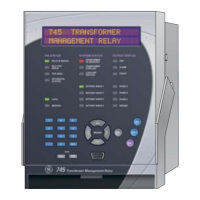
